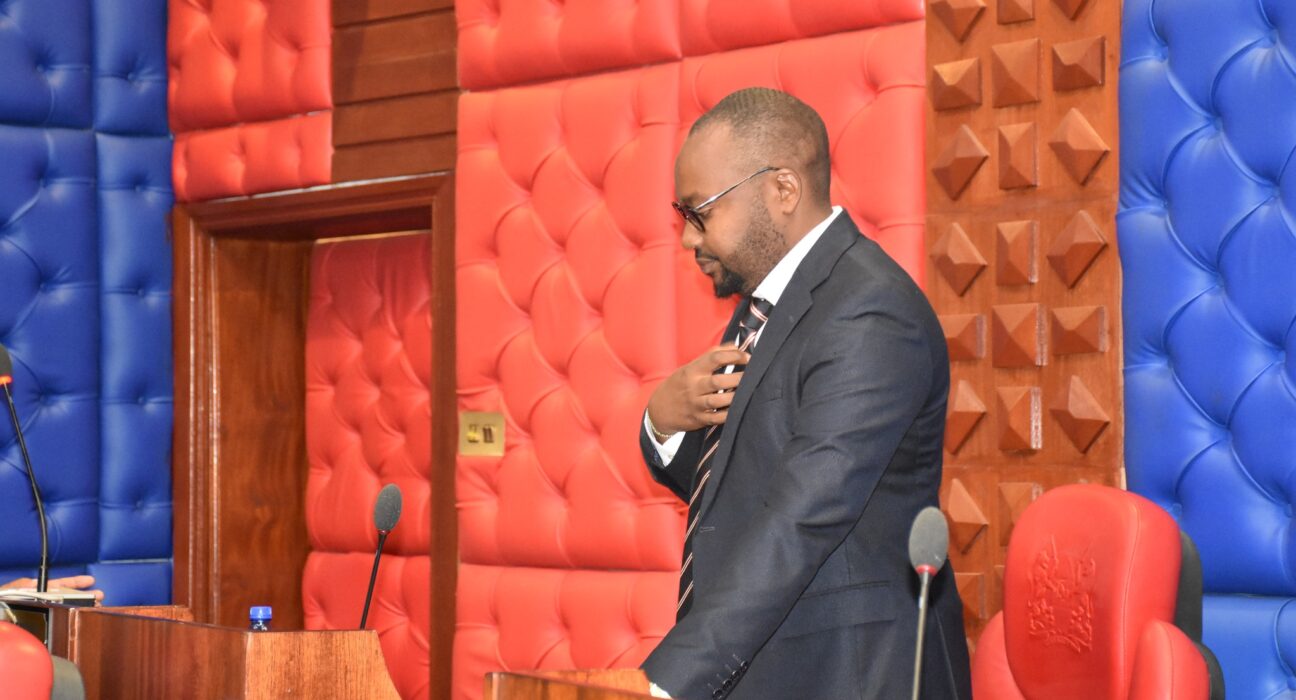Kirinyaga County, a cornerstone of Central Kenya’s economic landscape, is administratively structured into 5 sub-counties and 20 electoral wards, each represented by a Member of the County Assembly (MCA). For business leaders, policymakers, and investors eyeing opportunities in 2025, this framework is more than a map—it’s a blueprint for strategic engagement. Located just 120 kilometers from Nairobi, Kirinyaga leverages its agricultural prowess and proximity to Mt. Kenya to drive growth, making its wards critical focal points for commerce and development.
This article presents a comprehensive list of all 20 wards across Kirinyaga’s four constituencies—Mwea, Gichugu, Kirinyaga Central, and Ndia—supported by data-driven insights into their economic roles. With the county’s GDP contribution pegged at KSh 78 billion annually (Kenya Economic Survey 2023), understanding these wards offers a competitive edge. Below, we detail each ward’s profile and explore how businesses can capitalize on their unique strengths.
Kirinyaga County’s Economic Profile: A Foundation for Growth
Kirinyaga County spans 1,478 square kilometers and supports a population exceeding 610,000, according to the 2019 Kenya Population and Housing Census. Under Governor Anne Waiguru’s leadership, it has emerged as a hub for agriculture, contributing significantly to national food security and export markets. The county’s five sub-counties—Mwea East, Mwea West, Kirinyaga Central, Gichugu, and Ndia—are subdivided into 20 wards, each playing a distinct role in its economic fabric.
Agriculture underpins 70% of Kirinyaga’s economy, with rice from Mwea accounting for 60% of Kenya’s supply (Kenya National Bureau of Statistics, 2023). Tea and coffee from Gichugu and Ndia bolster export earnings, while urban centers like Kerugoya fuel trade and services. The county’s 2024/2025 budget of KSh 6.8 billion prioritizes agriculture and infrastructure, signaling robust growth prospects for 2025. For businesses, these wards are entry points to a dynamic market—here’s the full breakdown.
Complete List of Wards in Kirinyaga County by Constituency
Kirinyaga’s 20 wards are organized under four constituencies, each with economic characteristics that shape local opportunities. This section lists every ward and examines its significance.
Mwea Constituency
Mwea Constituency, spanning Mwea East and Mwea West sub-counties, encompasses 8 wards and is synonymous with rice production, anchored by the Mwea Irrigation Scheme.
- Mutithi Ward
- Overview: Predominantly rural, focused on tea and coffee cultivation.
- Economic Role: A steady supplier for agro-processing industries, with potential for farm input markets.
- Kangai Ward
- Overview: Agricultural with small trading centers.
- Economic Role: Supports microfinance and retail, driven by farming communities.
- Wamumu Ward
- Overview: A rice production hub with active local markets.
- Economic Role: Key for rice milling and storage, employing over 5,000 directly (county estimates).
- Nyangati Ward
- Overview: Rice and subsistence farming dominate.
- Economic Role: High demand for fertilizers and seeds offers supply chain opportunities.
- Murinduko Ward
- Overview: Rural with emerging commercial nodes.
- Economic Role: Strategic for logistics, connecting Mwea to broader markets.
- Gathigiriri Ward
- Overview: Agricultural with population growth.
- Economic Role: Growing consumer base for FMCG and basic services.
- Tebere Ward
- Overview: Core rice zone tied to irrigation infrastructure.
- Economic Role: Fertile ground for irrigation tech and rice trading ventures.
- Thiba Ward
- Overview: Rice-heavy, located near the Thiba River.
- Economic Role: Supports water management solutions and bulk rice trade.
Gichugu Constituency
Gichugu Constituency, with 5 wards, thrives on tea and coffee production across its hilly terrain.
- Kabare Ward
- Overview: Tea farming hub with established local trade.
- Economic Role: Central to tea processing and export chains, generating KSh 5 billion annually.
- Baragwi Ward
- Overview: Agricultural with a cooperative-driven economy.
- Economic Role: Ideal for agribusiness partnerships and value addition.
- Njukiini Ward
- Overview: Rural, focused on farming.
- Economic Role: Emerging market for renewable energy solutions like solar.
- Ngariama Ward
- Overview: Tea and coffee production with small-scale commerce.
- Economic Role: Demand for transport links to urban markets.
- Karumandi Ward
- Overview: Farming with residential expansion.
- Economic Role: Potential for real estate and retail development.
Kirinyaga Central Constituency
Kirinyaga Central Constituency, hosting the county headquarters in Kerugoya, includes 4 wards with urban and rural interplay.
- Mutira Ward
- Overview: Rural with tea and coffee cultivation.
- Economic Role: Open to agri-tech adoption for enhanced productivity.
- Kanyekini Ward
- Overview: Farming with modest trade activity.
- Economic Role: Growth potential for financial services and agent banking.
- Kerugoya Ward
- Overview: County’s urban and commercial center.
- Economic Role: Hub for B2B services, retail, and professional sectors.
- Inoi Ward
- Overview: Mix of agriculture and residential areas.
- Economic Role: Prospects for affordable housing and community services.
Ndia Constituency
Ndia Constituency, with 3 wards, is compact but vital to Kirinyaga’s agricultural output.
- Mukure Ward
- Overview: Rural with tea as the economic driver.
- Economic Role: Opportunities in tea packaging and processing.
- Kiine Ward
- Overview: Farming with developing community hubs.
- Economic Role: Market for consumer goods and healthcare expansion.
- Kariti Ward
- Overview: Tea and coffee production stronghold.
- Economic Role: Scope for farm machinery and repair services.
Economic Impact of Kirinyaga’s Wards
Kirinyaga’s wards collectively contribute KSh 78 billion to Kenya’s GDP, with agriculture as the linchpin. Mwea’s 8 wards produce over 100,000 tonnes of rice annually, meeting 60% of national demand (KNBS 2023). Gichugu and Ndia wards drive tea and coffee exports worth KSh 20 billion yearly, while Kerugoya anchors urban commerce with a growing service sector. The Mwea Irrigation Scheme alone sustains over 30,000 jobs, amplifying opportunities for supply chains and ancillary businesses.
Key economic highlights:
- Rice Dominance: Mwea wards like Wamumu and Thiba underpin food security and agro-industries.
- Export Earnings: Kabare and Mukure fuel Kenya’s global tea trade.
- Urban Growth: Kerugoya supports a commercial ecosystem valued at KSh 10 billion annually (county estimates).
Strategic Business Opportunities in Kirinyaga’s Wards
Kirinyaga’s wards present diverse prospects for 2025. Below are targeted opportunities by sector.
Agribusiness and Processing
- Focus Wards: Mutithi, Wamumu, Tebere, Kabare, Ngariama.
- Opportunities: Establish rice or tea processing plants; supply farm inputs like fertilizers.
- Data Point: Kirinyaga’s rice output grew 8% in 2023, signaling rising demand (KNBS).
Retail and Consumer Services
- Focus Wards: Kerugoya, Gathigiriri, Karumandi.
- Opportunities: Launch retail outlets or distribute FMCG; offer solar products.
- Data Point: Kerugoya’s urban population rose 5% since 2019, per census trends.
Logistics and Infrastructure
- Focus Wards: Murinduko, Thiba, Inoi, Kiine.
- Opportunities: Provide last-mile delivery or cold storage solutions.
- Data Point: Rural wards lose 15% of produce to poor transport, per county reports.
Financial and Digital Services
- Focus Wards: Kerugoya, Kanyekini, Njukiini.
- Opportunities: Expand mobile banking, digital loans, or e-commerce.
- Data Point: Sacco digital transactions rose 15% in 2023 (SASRA).
Challenges and Forward-Looking Insights
Kirinyaga’s wards face structural challenges that businesses can address:
- Road Infrastructure: Rural wards like Mukure and Kangai suffer from poor connectivity—logistics firms can bridge this gap.
- Digital Penetration: Kerugoya leads in internet access, but Njukiini trails—tech investments could level the field.
- Climate Vulnerabilities: Mwea’s floods disrupt rice yields, creating demand for insurance and water tech.
A critical insight: Kirinyaga’s urban-rural divide is a strength. Kerugoya’s commercial base can distribute Mwea’s agricultural output, while Kirinyaga University in Kutus supplies skilled graduates—over 1,000 annually—for tech and business roles.
Actionable Steps for Business Engagement
To leverage Kirinyaga’s wards, businesses should adopt these strategies:
- Ward-Specific Planning: Tailor offerings—rice in Mwea, tea in Gichugu—to local economies.
- Local Collaboration: Engage MCAs or trader groups in wards like Wamumu for market insights.
- Data Utilization: Reference county resources (kirinyaga.go.ke) for economic trends.
- Partnerships: Align with Saccos or farmer cooperatives for credibility and reach.
- Digital Integration: Use M-Pesa or online platforms to serve even remote wards.
The county’s KSh 6.8 billion budget for 2024/2025, with 40% earmarked for agriculture, offers a funding pipeline for aligned projects.





